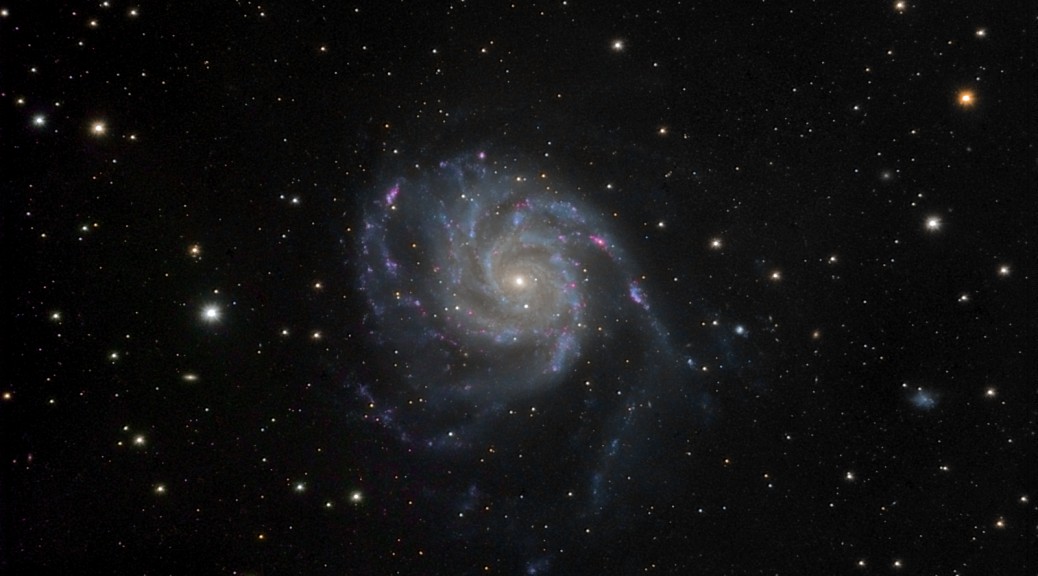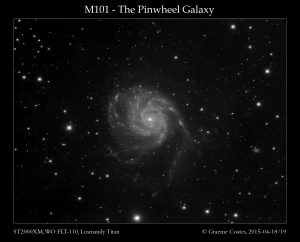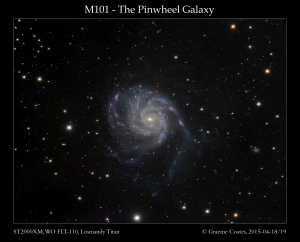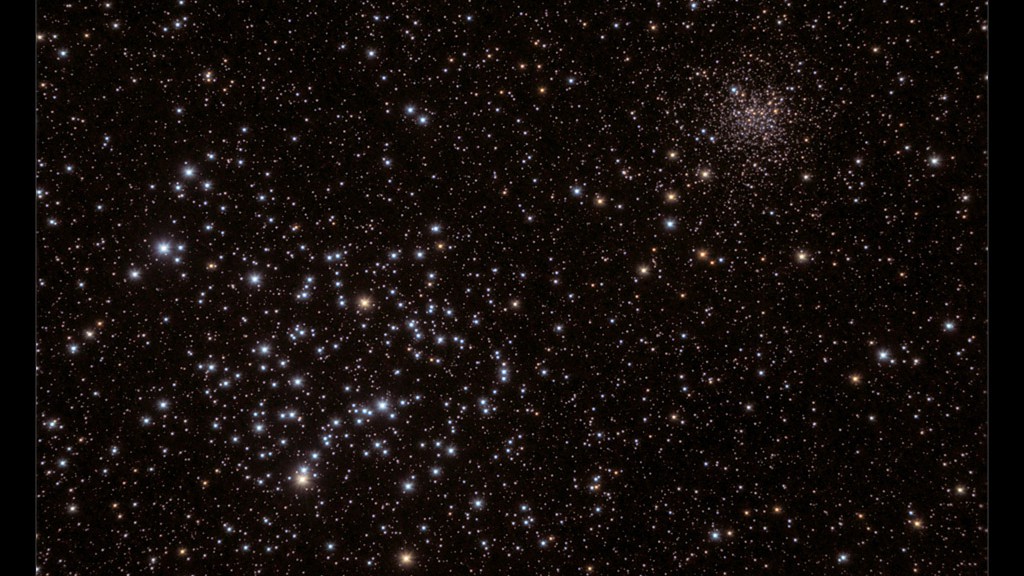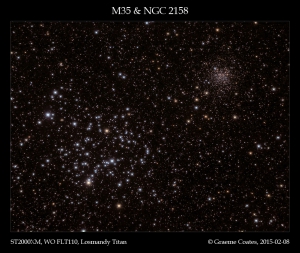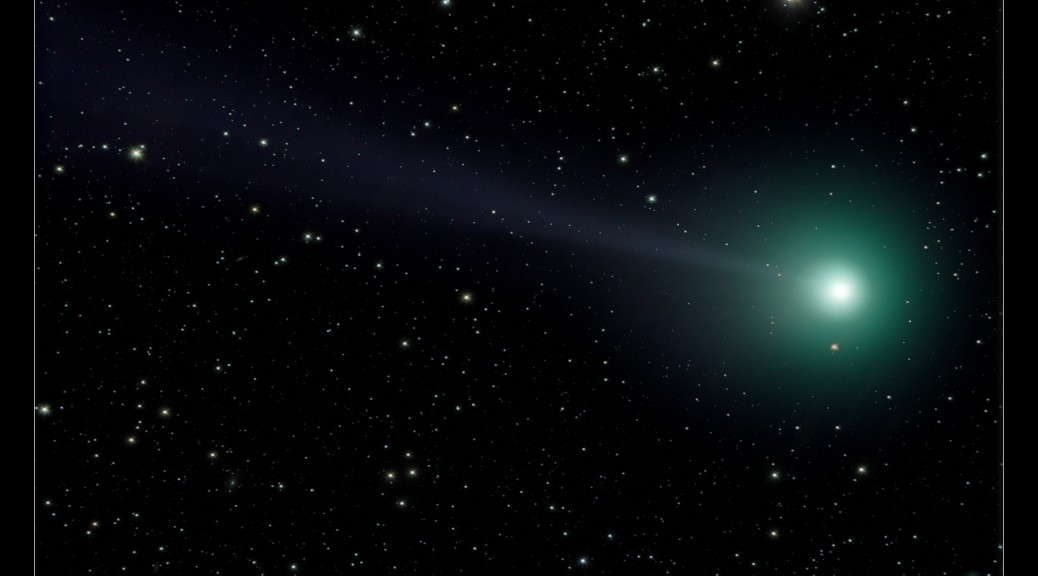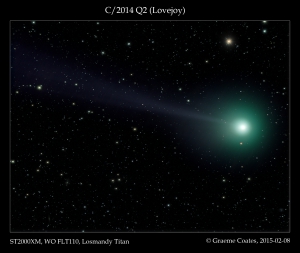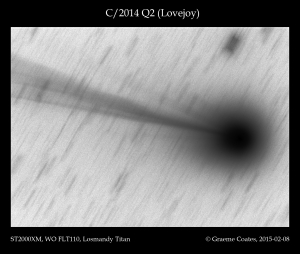Field centered at: RA: 14h 03m 12.6s, Dec: +54° 21′ 16.7″
Up: 178 E of N.
(plate solve from nova.astrometry.net)
The Pinwheel Galaxy, M101 is located in Ursa Major, and I found this a surprisingly tricky object to image – it has low surface brightness, with a lot of faint outlying regions. I also appeared to have some small issues with the flat fielding process here – there are a couple of very large dust bunnies in the raw data that haven’t quite been subtracted away and there’s a touch of clipping to deal with this. Add to this some faint colour gradients (attempted to sort out gradients!) and a couple of bright stars in the field and it became something very tricky to try and get right (and I’m still not 100% convinced that it’s truly there yet…).
The fainter galaxy to the right (east) of M101 is NGC5477, which is a dwarf galaxy at about the same distance (~20MLy). There are lots of fainter objects in the image as well: the brighter galaxy to the upper left of M101 for example is MCG+09-23-25, and there are also loads of other faint galaxies, galaxy groups and QSOs lurking in there. Using a solved fits file in Aladin is very instructive here!
I used fairly long exposure lengths (I was using the FLT110 at f7 here, a shorter focal length would be a major bonus in truth – at f4-5 this would be a much deeper image!). Exposure details are as follows:
WO FLT110 @ f7 on Losmandy Titan, ST2000XM cooled to -20C (images on 18 & 19-Apr-2015)
L: 4.5hrs (1×1)
R: 70min (2×2 binned)
G: 48min (2×2 binned)
B: 48min (2×2 binned)
The Luminance for the image was processed using a Lucy-Richardson deconvolution (3 iterations) using CCDSharp.
